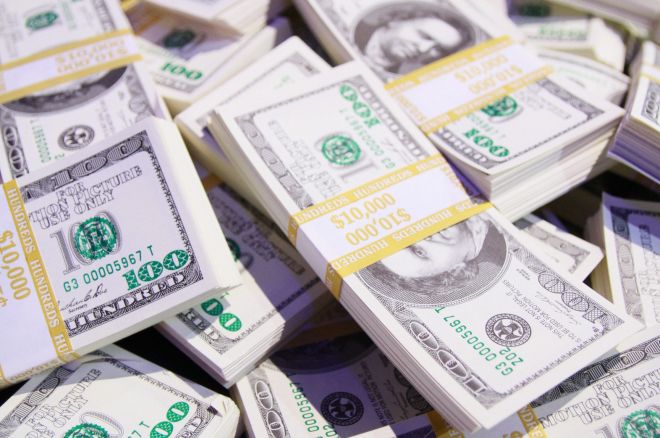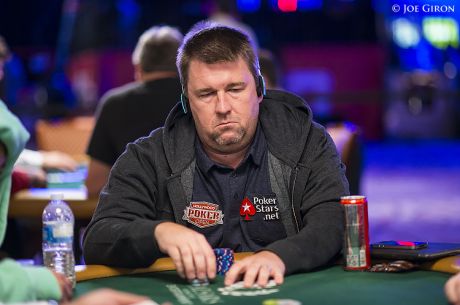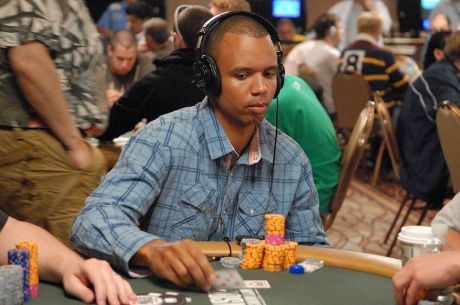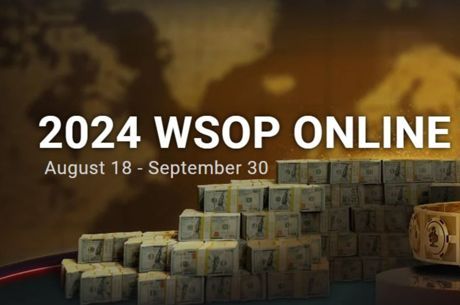Comparing the 2015 WSOP Main Event Payouts To Recent Years

We've come to know the World Series of Poker Main Event as an event like none other. It's incomparable to anything but itself, and it stands alone atop the poker mountain. The combination of the ultimate poker achievement, a $10,000 investment, and a return that could yield multiple millions of dollars �� or even multiple hundreds of thousands of dollars �� for more than just the winner attract thousands of players, gamblers, and dreamers from all walks of life, all across the globe.
Tuesday night, Day 1c of the 2015 edition concluded. It was the third and final starting flight of this year's Main Event, and players, fans, media, and industry members all waited on one thing �� the final tally of entries in the "grand daddy of them all" and the prize pool.
Following the completion of registration, it was announced that 3,963 players entered Day 1c and brought the total field size of the 2015 WSOP Main Event up to 6,420. With that came the announcement of a $60,348,000 prize pool and a $7,680,021 top prize.
After first planning to go with another $10,000,000 guaranteed first-place prize, WSOP officials listened to feedback from the poker community and changed the payout structure for the event. Instead of an eight-figure guarantee on the top prize, the WSOP set out to pay the top 1,000 places at least $15,000 if the field size was greater than 5,000 entries.
"The dream of life-changing money is core to the DNA of the WSOP Main Event and we also want to make it easier to experience playing in poker's Big Show," said WSOP Executive Director Ty Stewart at the time of the change. "Our players understand numbers, and 2015 now presents the best odds ever to leave the Main Event a winner."
Indeed this year does prevent the best odds to leave the Main Event a winner, as the top 1,000 spots will earn a minimum of 1.5 times the buy-in of the event, profiting $5,000. With this year's field size at 6,420 entries, that means over 15.5 percent of the field will reach a cash. That's more than any year since Chris Moneymaker helped spark the poker boom in 2003.
| Year | Entries | Places Paid | % of Field Paid |
|---|---|---|---|
| 2015 | 6,420 | 1,000 | 15.58% |
| 2014 | 6,683 | 693 | 10.37% |
| 2013 | 6,352 | 648 | 10.20% |
| 2012 | 6,598 | 666 | 10.09% |
| 2011 | 6,865 | 693 | 10.09% |
| 2010 | 7,319 | 747 | 10.21% |
| 2009 | 6,494 | 648 | 9.98% |
| 2008 | 6,844 | 666 | 9.73% |
| 2007 | 6,358 | 621 | 9.77% |
| 2006 | 8,773 | 873 | 9.95% |
| 2005 | 5,619 | 560 | 9.97% |
| 2004 | 2,576 | 225 | 8.73% |
| 2003 | 839 | 63 | 7.51% |
The change to the payout structure to allow for more players in the event to cash should do great things for the event moving forward. The positive effect the alterations have won't be fully realized immediately in 2015, as the field size is down 263 players, but this adjustment isn't about the short term. It's about the bigger picture.
If I can cash in the Main Event, Jimmy, then you can, too!
Directly compared to last year, 307 more players will see a return on their investment. That's 307 more players with a story. The story of cashing in poker's biggest event. Those players will be much more likely to return in future years, and they'll be much more inclined to tell their friends all about their success out in Las Vegas playing in the WSOP Main Event.
The next thing we want to look at is how the new payout structure compares with the old one. In this case, we compared the new 2015 structure with that of 2014 and 2013. We opted for a comparison of all three because in 2014 there was a $10,000,000 first-place guarantee on the payout structure, which altered some of the payouts compared to previous years. The 2013 version best reflects what a "normal" payout structure has looked like in recent years for the Main Event.
| Place | 2015 Payout | 2014 Payout | 2013 Payout |
|---|---|---|---|
| 1 | $7,680,021 | $10,000,000 | $8,361,570 |
| 2 | $4,469,171 | $5,145,968 | $5,174,357 |
| 3 | $3,359,103 | $3,806,402 | $3,727,823 |
| 4 | $2,638,558 | $2,848,833 | $2,792,533 |
| 5 | $1,910,971 | $2,143,174 | $2,106,893 |
| 6 | $1,440,072 | $1,622,080 | $1,601,024 |
| 7 | $1,203,193 | $1,235,862 | $1,225,356 |
| 8 | $1,097,008 | $947,077 | $944,650 |
| 9 | $1,001,020 | $730,725 | $733,224 |
| 10 | $756,897 | $565,193 | $573,204 |
| 11-12 | $526,778 | $565,193 | $573,204 |
| 13-15 | $411,453 | $441,940 | $451,398 |
| 16-18 | $325,034 | $347,521 | $357,665 |
| 19-27 | $262,574 | $286,900 | $285,408 |
| 28-36 | $211,821 | $230,487 | $229,281 |
| 37-45 | $164,086 | $186,388 | $185,694 |
| 46-54 | $137,300 | $152,025 | $151,063 |
| 55-63 | $113,764 | $124,447 | $123,597 |
| 64-72 | $96,445 | $103,025 | $102,102 |
| 73-81 | $79,668 | $85,812 | $84,786 |
| 82-90 | $68,624 | $72,369 | $71,053 |
| 91-99 | $55,649 | $61,313 | $59,708 |
| 100-162 | $46,890 | $52,141 | $50,752 |
| 163-225 | $40,433 | $44,728 | $42,990 |
| 226-288 | $34,157 | $38,634 | $37,019 |
| 289-351 | $29,329 | $33,734 | $32,242 |
| 352-360 | $24,622 | $29,400 | $32,242 |
| 361-414 | $24,622 | $29,400 | $28,063 |
| 415-432 | $21,786 | $25,756 | $28,063 |
| 433-477 | $21,786 | $25,756 | $24,480 |
| 478-504 | $19,500 | $22,678 | $24,480 |
| 505-549 | $19,500 | $22,678 | $21,495 |
| 550-576 | $17,282 | $20,228 | $21,495 |
| 577-621 | $17,282 | $20,228 | $19,106 |
| 622-648 | $17,282 | $18,406 | $19,106 |
| 649-693 | $15,000 | $18,406 | -- |
| 694-1,000 | $15,000 | -- | -- |
The first thing that will jump off the page for anyone will be the differences in the first-place prize. Don't be too worried about the $2,319,979 drop from last year to this year, though, because that money is being reinvested for the greater good into paying additional spots. For the winner, the difference in winning $7,680,021 (2015), $10,000,000 (2014), or $8,361,570 (2013) isn't actually that much. Look beyond the actual dollar amount. At the end of the day, it's all a massive amount of life-changing money for a comparably small $10,000 plunge.
Second, the top nine finishers �� deemed the "November Nine" �� will all earn at least $1,000,000. That's something that hasn't been done since 2009, as every year since then the ninth-place finisher has earned less than seven figures. Making everyone a millionaire in the November Nine is another great change to this year's payout structure, as it creates greater allure to the final table and can be marketed.
The next interesting thing to note will be that 10th place this year will get a different amount �� an increased amount �� than 11th and 12th places will receive. The last time this happened was in 2003 when none other than Phil Ivey finished in 10th place the year Moneymaker won. Every year since then, 10th, 11th, and 12th have received the same payout. This additional increase helps to avoid such a large bubble for the November Nine and in a way "rewards" the 10th-place finisher over the two finishers before him. After all, that player will have reached the final table of the tournament even if it is "unofficial." This change is also interesting because of the dynamic it should create with 11 players left, as there is a pay jump here that hasn't been here recently. An additional $230,000 in prize money should slow things down when playing from 11 to 10.
After that, all of the next payout groups will receive a little less in 2015 than in either 2014 or 2013. While some might look at this in a vacuum and think it's bad, the difference isn't a ton of money and that difference is being dispersed elsewhere where it will help go to the greater cause �� paying more places. Of note, though, the top 72 finishers in the event all received a six-figure payday in 2014 and 2013. That won't be the case this year, as spots 64-72 will receive $96,445. This year, the top 63 spots will break into six-figure territory.
Lastly, is the final group. Places 694-1,000 will all earn $15,000. When the prize pool for the $565 Colossus event was announced, players were a bit shocked. This mostly had to do with the first-place prize being smaller than expected, but there were other gripes to be had. One way the Colossus payouts could have been better for those going deeper would be to alter the bottom portion of the prize structure. The way the Main Event bunched together a large chunk of in-the-money finishers within the first payout bracket is excellent. In the Colossus event, the first bracket was spots 2,161-2,241 and the second bracelet was 2,071-2,160 with a jump of $89 from the first to the second. The WSOP should have gone with a similar idea like this year's Main Event where they simply group a much larger portion towards the bottom part of the payout structure within one bracket.
All in all, the changes to the payout structure for this year are very good, and, as mentioned previously, should help grow this event in years to come.
Want to stay atop all the latest from the 2015 WSOP? If so, make sure to get PokerNews updates on your social media outlets. Follow us on Twitter and find us on both Facebook and Google+!










